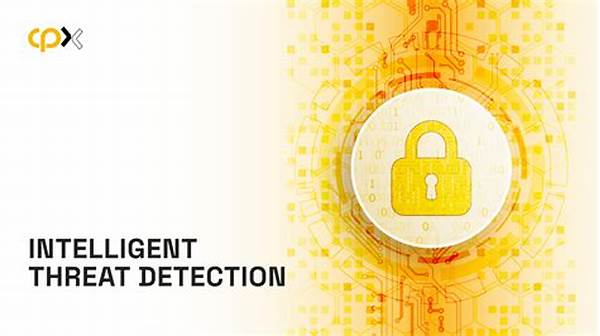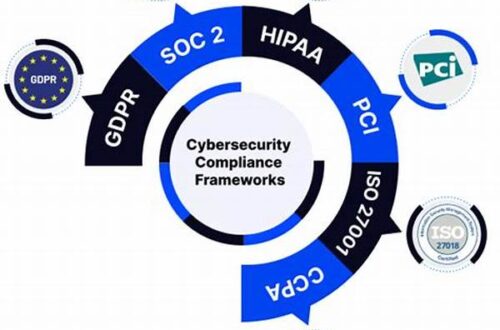In the rapidly evolving landscape of cybersecurity, the integration of advanced technologies is imperative to counteract increasingly sophisticated threats. Intelligent threat detection solutions represent a critical advancement, leveraging cutting-edge technologies to identify, assess, and mitigate potential security breaches. These solutions are indispensable in maintaining the integrity and confidentiality of sensitive information across various sectors.
The Importance of Intelligent Threat Detection Solutions
Intelligent threat detection solutions have become essential in the modern world due to the escalating complexity of cyber threats. As cybercriminals deploy more sophisticated tactics, traditional security measures often fall short of providing adequate protection. These innovations use artificial intelligence and machine learning to recognize patterns and anomalies that may suggest a security threat. This proactive approach allows for faster response times, minimizing the potential for data breaches and subsequent damage. Organizations across diverse industries increasingly rely on these solutions to safeguard their assets, underscoring their vital role in contemporary cybersecurity strategies.
In addition to technological advantages, intelligent threat detection solutions offer operational benefits. By automating the detection process, these systems reduce the workload on IT security teams, allowing personnel to focus on more strategic tasks. Automation ensures consistent and accurate monitoring, a critical component in large-scale operations where human oversight may not suffice. Furthermore, these solutions can adapt to evolving threats, continuously updating their parameters to reflect the latest threat intelligence. This dynamic capability makes them particularly valuable in sustaining an organization’s security posture.
Key Features of Intelligent Threat Detection Solutions
1. Real-time Monitoring: Intelligent threat detection solutions enable continuous, real-time monitoring of network environments to swiftly identify potential threats.
2. Machine Learning Algorithms: By employing advanced machine learning techniques, these solutions can anticipate future threats based on historical data.
3. Anomaly Detection: They excel in identifying unusual patterns of behavior, helping organizations to detect threats that deviate from the norm.
4. Automated Response: Intelligent threat detection solutions can automatically trigger response protocols, reducing reaction times to potential threats.
5. Comprehensive Reporting: These solutions offer detailed reporting and analytics, aiding in the post-incident analysis and decision-making process.
Advancements in Intelligent Threat Detection Solutions
The field of intelligent threat detection solutions has witnessed substantial advancements, propelled by technological innovation and increasing cybersecurity demands. A significant development is the integration of artificial intelligence, which enhances the precision and scope of threat detection. AI’s capability to process vast amounts of data in real-time enables these systems to identify potential vulnerabilities and neutralize them before they can be exploited.
Another pivotal advancement involves the adoption of machine learning, which allows intelligent threat detection solutions to learn from previous incidents. This capability enhances predictive accuracy, identifying emerging threats preemptively. Additionally, the incorporation of big data analytics empowers these systems to extract insights from a multitude of data points, providing a comprehensive understanding of potential risks. These advancements demonstrate the significant potential of intelligent threat detection solutions in fortifying cybersecurity infrastructures.
Implementation Strategies for Intelligent Threat Detection Solutions
Effective implementation of intelligent threat detection solutions requires a systematic approach encompassing multiple facets. Firstly, organizations should conduct a thorough assessment of their security needs to determine the most appropriate solutions. This assessment includes evaluating existing infrastructure, identifying potential vulnerabilities, and understanding the specific threat landscape relevant to the organization.
Integration with current systems is another critical aspect of implementation. Effective integration ensures seamless communication between the new threat detection solutions and pre-existing security measures, fostering a cohesive defense strategy. Moreover, continuous monitoring and updating of these solutions are imperative, as cybersecurity threats continually evolve. Regular training for security personnel in utilizing these sophisticated tools will further enhance their efficacy in protecting organizational assets. Overall, strategic implementation is crucial for maximizing the benefits of intelligent threat detection solutions.
Benefits of Intelligent Threat Detection Solutions
The deployment of intelligent threat detection solutions provides numerous benefits. These systems enhance the security posture of organizations by offering advanced monitoring capabilities that traditional methods cannot match. One of the primary advantages is improved efficiency, as these solutions can detect threats at an early stage, preventing potential breaches before they cause significant harm.
Another notable benefit is the reduction in dependency on human resources for constant monitoring, allowing IT teams to concentrate on other pressing issues. Furthermore, intelligent threat detection solutions offer flexibility, scaling according to organizational growth and changing security needs. This adaptability makes them an indispensable component of modern cybersecurity strategies, ensuring robust protection against evolving threats.
Challenges and Considerations in Implementing Intelligent Threat Detection Solutions
While intelligent threat detection solutions provide numerous advantages, their implementation is not without challenges. One significant hurdle involves the cost associated with deploying advanced technologies. Organizations must balance the investment required with the potential risk mitigations provided by these solutions. Furthermore, integrating new technologies into existing infrastructures can be complex, requiring careful planning and execution to ensure interoperability.
Another consideration is maintaining the privacy and integrity of the data processed by these systems. Organizations must ensure compliance with relevant regulations and implement robust data governance practices. Additionally, there is a need for ongoing training and development of staff to effectively utilize intelligent threat detection solutions, which can be resource-intensive. Addressing these challenges is essential for organizations aiming to leverage the full potential of intelligent threat detection solutions.
Conclusion
In summary, intelligent threat detection solutions play a pivotal role in modern cybersecurity strategies. As cyber threats continue to evolve in sophistication and scale, these solutions provide organizations with the necessary tools to stay ahead in the cybersecurity landscape. By leveraging advanced technologies such as artificial intelligence and machine learning, they offer unparalleled capabilities in threat recognition and mitigation.
The implementation of intelligent threat detection solutions must be strategic, addressing both technological and operational aspects to ensure optimal functionality. Despite challenges such as cost and integration, the benefits of deploying these solutions are substantial, enhancing security measures and resource efficiency. As organizations continue to prioritize cybersecurity, the adoption and refinement of intelligent threat detection solutions will remain at the forefront of protecting valuable digital assets.





